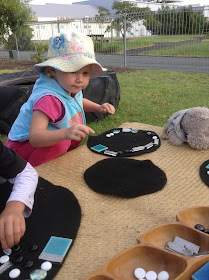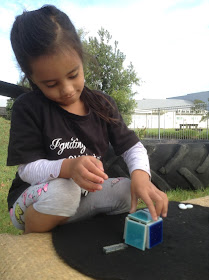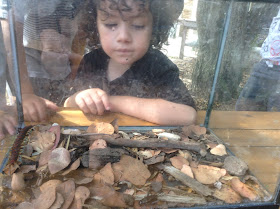A favourite way to explore mathematics at our kindergarten is through pattern-making with loose parts. As children create their patterns they explore concepts of space, shape, colour, repetition, and number.
"Throughout the early years of life, children notice and explore mathematical dimensions of their world. They compare quantities, find patterns, navigate in space, and grapple with real problems such as balancing a tall block building or sharing a bowl of crackers fairly with a playmate. Mathematics helps children make sense of their world" (NAEYC, 2002).
Creating and exploring patterns is often a quiet and time-consuming experience.
Children engaging in pattern making are more likely to work individually or in small groups. More often than not, children create more than one pattern. They make pattern after pattern, exploring new ideas, variations of past patterns, or creating patterns similar to those that their peers create.
As the children engage with the loose parts, they become mindful of their creation. They think about what piece they need to add to their pattern and where they are going to place it. And as the creators of their own patterns, only the children know when their pattern is complete.
Knowing that someone is interested in their patterns encourages children to talk about what they are doing and thinking.
"Guess what I'm making?
... it's a pattern" said Maia.
"This one is shiny and this one is shiny and this one is not? Wait... this one is really sparkle!" said Abbie.

"I'm doing the raindrops at my house...
Now I'm making a different pattern...
Now it's a sunflower" said Harper.
"Pattern is about seeing connections and making links" (Early Childhood Ireland, 2012).
"For young children identifying and creating patterns is just the beginning of the mastery of life-long mathematical skills" (Early Childhood Ireland, 2012).













































































